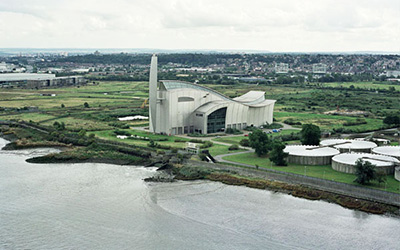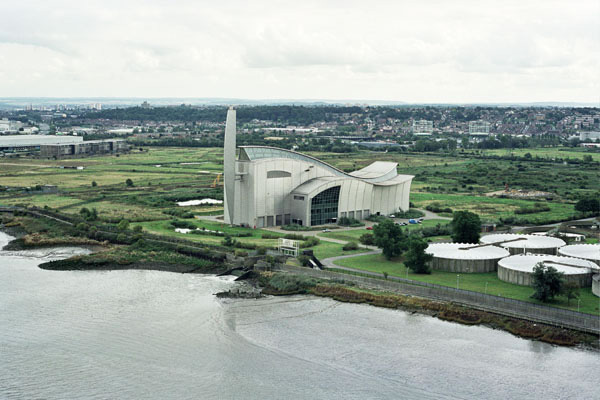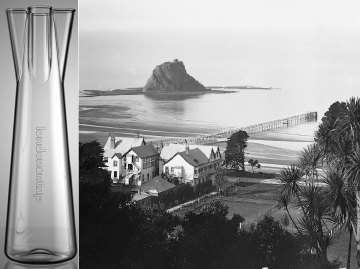Forum flies through first big test


Economies of Scale: The six-megawatt Crossness sludge-powered generator is an architecturally stunning example of the benefits of centralised sewage treatment done right. The earliest part of the Crossness works, which treats the sewage of two million Londoners, dates from 1865. photograph Thames Water
Sewage brings out the worst in people, and the worst people out.
Although that is deliberately trite, sewerage proposals are legendary for eliciting the not-in-my-backyard response.
It was easy in 1974. The Warkworth town council imposed a flawed scheme, albeit a radical improvement on what previously passed for treatment, and the balance of the stakeholders united in indignant objection.
The issue even provided the necessary impetus to form Friends of the Mahurangi. But the legal landscape has changed drastically in 35 years. While the requirement to consult is mandatory and considerable, ultimately stakeholders who rely solely on passionate opposition have zero impact on the science-grounded Environment Court.
From Rodney District Council senior wastewater planning engineer Jo Floyd’s perspective, the Mahurangi Initiative forum was an answer to a maiden’s prayer. Ms Floyd saw the forum, with its holistic interest in the Mahurangi catchment, as a much more valuable sounding board than any meeting that primarily aimed at those with a heightened interest in sewerage—an interest that may verge on the obsessive.
However, for the fledgling Mahurangi Initiative forum, which is still finding its feet, becoming embroiled in a sewerage stoush was arguably the last thing it needed. A three-minute introduction screened by the writer encouraged attendees to think of the forum as an opportunity by a network of stakeholders to engage in an open-minded exploration. The implied message—this is not a group, and it is most definitely not a decision-making group—needed to be reinforced with the presenters, if not the other attendees.
Jo Floyd and Harrison Grierson Consultants’ Ash Deshpande and Ian Ho presented a total of 13 options, which all assumed familiar technology and largely unmoderated water usage. Four of the 13 were options that only affected areas beyond the Mahurangi, such as option nine, which would see flows from the Snells–Algies scheme discharged to land in dry weather, and to the existing outfall the balance of the time. In the seven of the nine options that affected the Mahurangi, the objective of not discharging into the Mahurangi River was achieved completely or partially. While this ratio could be seen as grounds for its anticipation, the high cost involved with the land disposal options means that an end to the river discharge is far from a forgone conclusion.
It had been planned that, after a period for questions, the device of breaking out into separate table discussions would be used. This can be a useful strategy to avoid the few dominating the discussion and give those unprepared to hold the floor in a hall before scores of people an opportunity to contribute.
In the event the forum was free flowing and inclusive, and the attendees—who included regional councillor Christine Rose and district councillor Dr Grahame Powell—were content to forgo the scheduled breakout session.
At the outset, Jo Floyd had explained that the strategy team was keen to use the forum to help winnow out some of the less-promising options. But she also gave an assurance that fresh options would be explored, if requested. The feedback in fact was exclusively to urge a departure from more of the same, and to treat sewage as a resource, rather than a waste product:
- Explore means of aggressively reducing water use
- Explore ‘subdivision-based’ systems
- Explore individual vermicasting systems
- Explore reuse as potable water.
Some of the strategies suggested were complimentary, others inevitably contradictory, but this failed to disconcert the engineers—the job of the forum was not to decide a strategy.
At the small-is-beautiful end, eco-architect Graeme North advocated the waterborne sewage treatment system he has installed, which screens off solids for composting with the particular assistance of tiger worms.
The most challenging suggestion came from ex-Liverpudlian, Mahurangi farmer Mike Neil. Knowing that London’s water supply is significantly reclaimed water, Mike challenged the forum to contemplate the logical—particularly to his engineer-trained mind—step of reclaiming the water to a superior, potable standard.
The notion of drinking reclaimed water was once universally repugnant. But the reality is that the current Warkworth sewage treatment plant effluent is cleaner, most of the time, than the river water abstracted by the town’s water treatment plant. Why not simply start with that cleaner water? Membrane treatment, which would be mandatory, removes every last virus. Ironically, this is not required when the water source is merely awash with farm animal wastes, and garnished with industrial contaminants.
The water treatment plant’s abstraction point is downstream from Warkworth’s industrial areas. The Gubbs Motors diesel discharge that shut down the water treatment plant in August 2007 was a costly reminder of this decidedly sub-optimal arrangement.
The response by the engineers to these calls for more sustainable solutions was far from defensive. And while it was not planned that way, the engineers are almost certainly more than happy to report to their masters that the request for more innovative and sustainable options has come from the stakeholders, via the Mahurangi Initiative forum.
Regardless of strategy, reducing inflow and infiltration of stormwater into Warkworth’s sewers is prerequisite to an efficient sewerage system. Jo Floyd undertook to revisit the strategy of retro-fitting with individual low-pressure grinder pumps, possibly concentrating on Warkworth’s leakiest areas.
The challenge is now to engage all the Mahurangi stakeholders in this exploration of alternatives to same old, same old. Reactionary ‘not in my backyard (or might that be, kitchen tap?)’ residents must not be permitted to sap the courage of the council and/or councillors.
Much grist—at least for those with hearty constitutions!—for that other open forum, the Friday morning Mahurangi Breakfast Club.

Tenth of a Penny to Infinity: The winner of the Thames Water carafe design competition, part of a campaign to convince customers that its tap water is comparable in taste to top-rated bottled water. Waiwera Hotel and wharf, and Mahurangi Island—from which the harbour takes its name. Jade River: A History of the Mahurangi
The last word goes to Rodney Water manager Marcus Shipton:
What a great bunch of people you’ve got here, intelligent, constructive and courteous; I’m going to come to the next forum!
Waiwera beats London—at 9000 times the price
Thames Water tap water rated third equal out of 24 in a taste test conducted by wine magazine Decanter.
Top spot was taken Waiwera Water but, at £9 a litre, worked out at 9000 times more expensive.
Even the runner up, Vittel, from Northeast France, was 590 times more expense than London tap water.
The panel of judges included the wine correspondent for the Independent, sommeliers from top London restaurants and a writer for the Decanter took part in the blind taste test.
Impressive, considering that 80% of London’s tap water is drawn from the Thames and the Lee, rivers that are the receiving bodies for wastewater treatment plants upstream.
